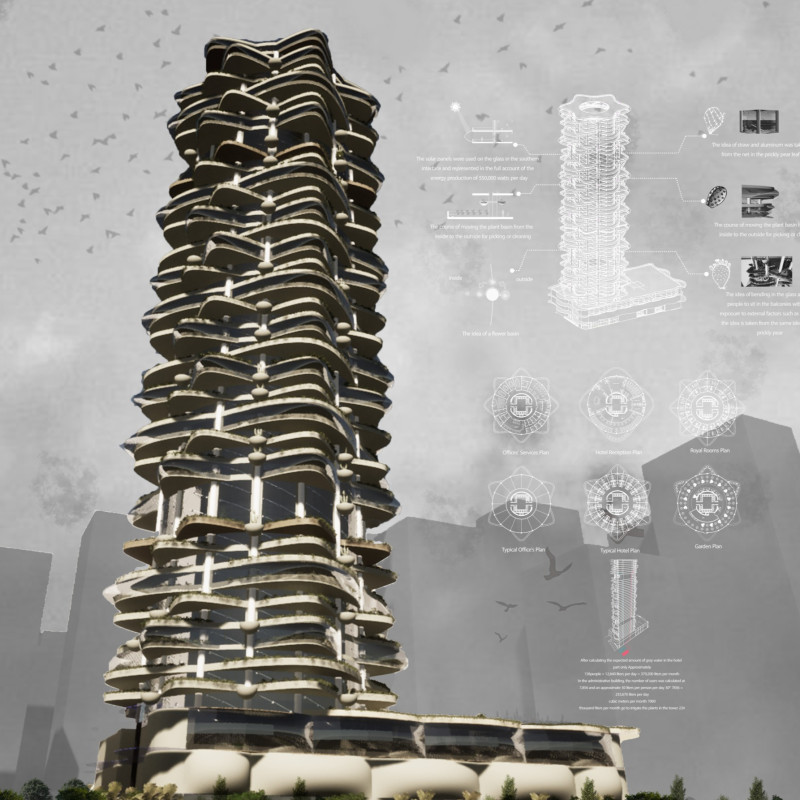5 key facts about this project
The Prickly Pear Tower in Taif, Saudi Arabia, represents a thoughtful approach to urban architecture by combining ecological principles with clean design. The building accommodates residential, commercial, and administrative functions, becoming an integral part of the surrounding community. It draws inspiration from the prickly pear plant, emphasizing a design concept that seeks to integrate natural elements within an urban context.
SUSTAINABILITY AND ENERGY EFFICIENCY
Energy sustainability is a central theme of the Prickly Pear Tower. Solar panels positioned on the southern glass facade generate approximately 550,000 watts of energy daily. This renewable energy source reduces reliance on traditional energy supplies and demonstrates a commitment to environmentally responsible living. By focusing on energy efficiency, the building aims to lessen its overall environmental impact while supporting its users.
INTEGRATION OF VERTICAL FARMING
A notable aspect of the building is its vertical farming system dedicated to growing prickly pear plants. This setup not only provides fresh food for residents but also contributes to the local ecosystem by promoting biodiversity. The design features a mechanism that allows for the movement of planting basins between indoor and outdoor spaces, simplifying maintenance and harvesting. This integration of agriculture within the urban environment serves to connect people with nature in their daily lives.
MATERIALITY AND CULTURAL NARRATIVE
Material choices in the Prickly Pear Tower reflect an emphasis on sustainability. The design incorporates straw and aluminum in the construction of specific elements, reinforcing the building's eco-friendly approach. Additionally, traditional Islamic geometric patterns are woven into the design, bridging the modern structure with the rich cultural heritage of the region. This thoughtful combination enriches the overall architectural story, giving it depth and context.
The building’s curved shape allows for balconies that protect residents from dust while offering panoramic views of the landscape. This design not only prioritizes comfort but also enhances the user's experience, connecting them to the beauty of their surroundings.



















































